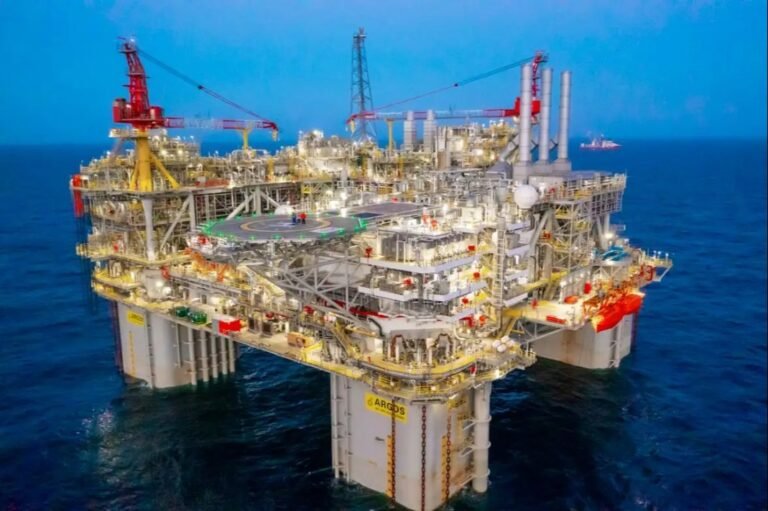The BP Argos Southwest Extension Project: Enhancing Offshore Production in the Gulf of America
The U.K.-headquartered energy giant BP has recently initiated the subsea tieback project aimed at increasing oil production at its platform in the U.S. Gulf of America.
Known as the Argos Southwest Extension project, this endeavor involves linking three subsea wells to the existing Argos platform, in addition to establishing a new drill center approximately 5 miles southwest of the platform. By integrating new wells with offshore production facilities through pipelines, the project is set to expand the reach of the Mad Dog field.
The anticipated outcome of this project is an increment of 20,000 barrels of oil equivalent per day (boe/d) to the production capacity of the Argos platform. The platform commenced production in 2023 as part of the Mad Dog Phase 2 initiative.
“The Argos expansion underscores our dedication to investing in America, fostering the growth of US offshore energy production in a safe and efficient manner,” remarked Andy Krieger, BP’s Senior Vice President for the Gulf of America and Canada. “This project marks the beginning of a significant growth phase for BP in the Gulf of America, which will continue to be pivotal in meeting the global energy demands of today and tomorrow.”
Situated in 4,500 feet of water, around 190 miles south of New Orleans, the Argos platform boasts a gross production capacity of up to 140,000 barrels of oil per day. BP holds the role of project operator with a 60.5% working interest, while its partners include Woodside Energy (23.9%) and Union Oil Company of California, an affiliate of Chevron (15.6%).
BP proudly declares that the Argos Southwest Extension project was completed seven months ahead of schedule, setting a new record for the company by achieving startup within approximately 25 months from the appraisal well’s completion in May 2023.
“The Argos expansion project exemplifies BP’s ability to swiftly bring new barrels to the market with safety and efficiency,” affirmed Gordon Birrell, BP’s Executive Vice President of Production and Operations. “Our capacity to progress from resource discovery to initial oil production at an accelerated pace underscores our unwavering commitment to enhancing shareholder value.”
Future Expansion Plans and Strategic Initiatives
The Argos Southwest Extension project marks BP’s fifth major project commencement in 2025, heralding a series of upcoming projects in the Gulf of America until the decade’s conclusion. In alignment with its reset strategy to amplify its global oil and natural gas operations, these projects are forecasted to elevate the company’s production capacity by approximately 400,000 barrels of oil equivalent per day from the U.S. offshore region.
Following the completion of the Argos Southwest Extension, BP is scheduled to unveil two additional expansion projects in the Gulf of America by 2027. The first one, the Atlantis Drill Center 1 Expansion, is poised to add around 15,000 boe/d of gross peak production, slated for startup in 2026.
The second initiative, the Atlantis Major Facility Expansion, is anticipated to further enhance production from the Atlantis field utilizing existing infrastructure. Commencement is targeted for 2027.
Concurrently, BP is investing in Kaskida, its sixth platform in the Gulf of America, representing the initial step towards tapping into 10 billion barrels of discovered resources in an oil-rich geological region roughly 250 miles southwest of New Orleans.
Kaskida, projected to have a production capacity of 80,000 barrels per day, is set to commence operations in 2029. SBM Offshore recently secured a contract for the construction of a semi-submersible floating production unit (FPU) designated for the project.
Additionally, the company is progressing towards finalizing an investment decision (FID) on its Tiber-Guadalupe project in 2025.
Amidst these developments, BP unveiled an oil and gas discovery at its prospect in the Bumerangue block within Brazil’s Santos Basin earlier today, further reinforcing its foothold in the global energy landscape.

